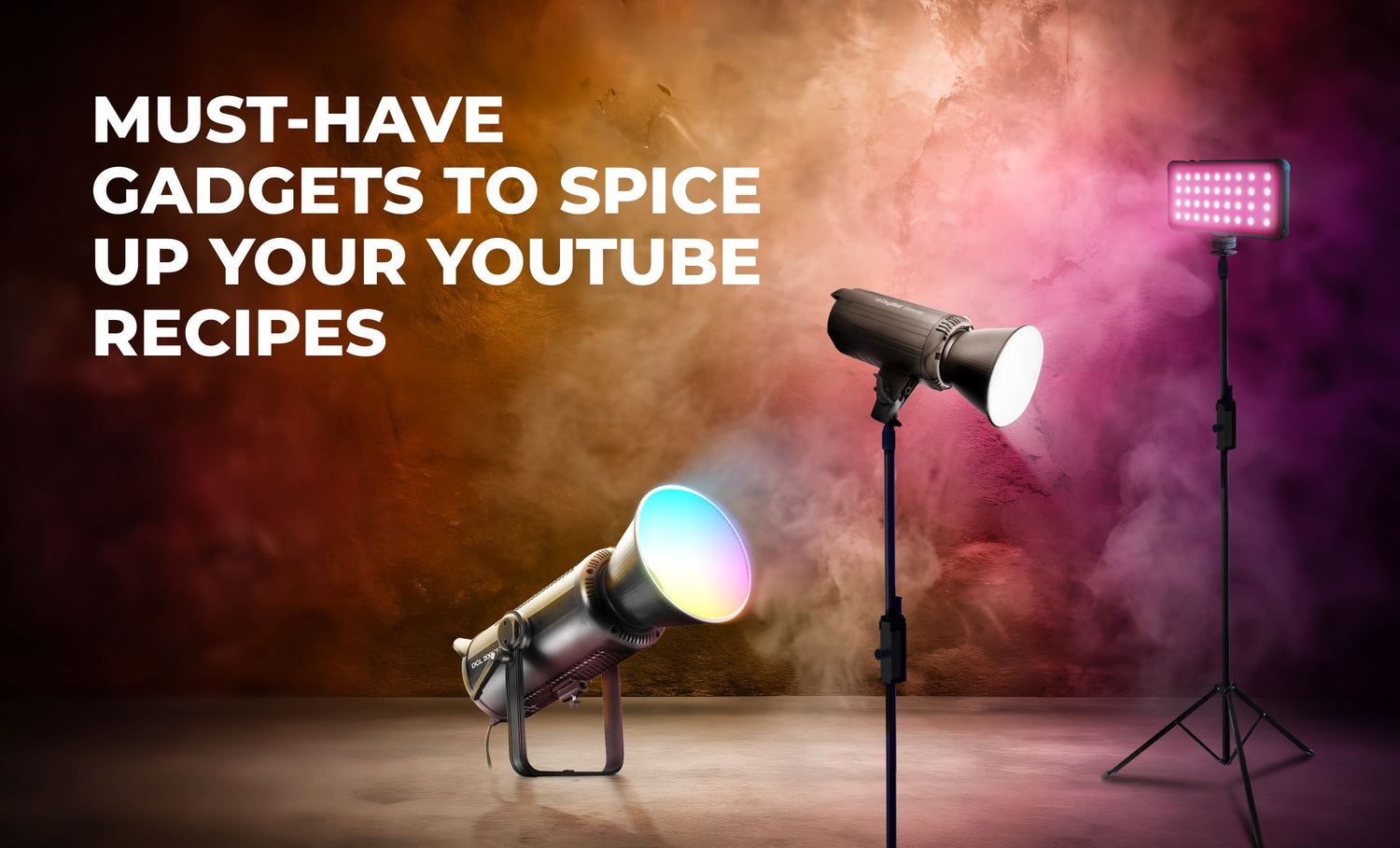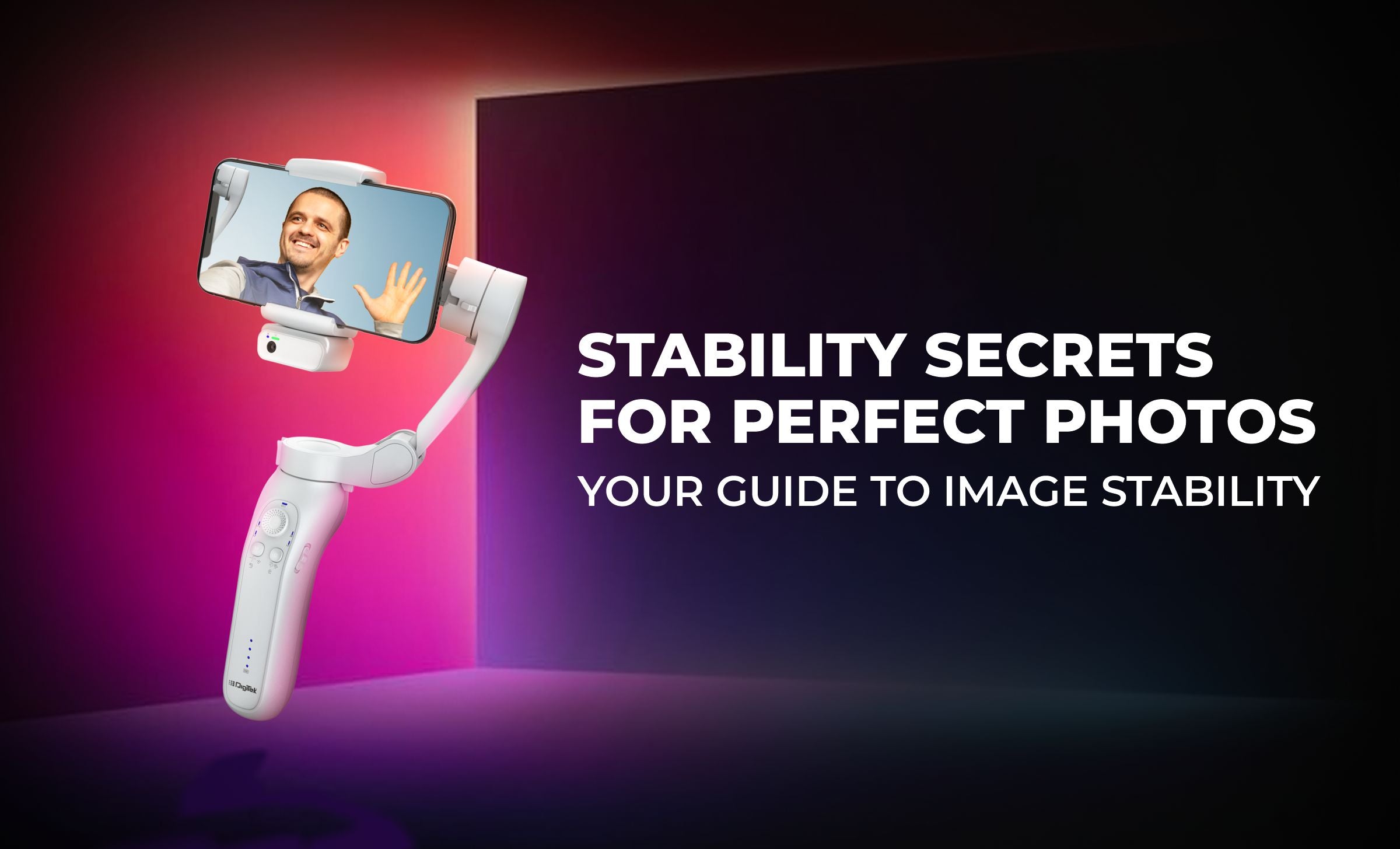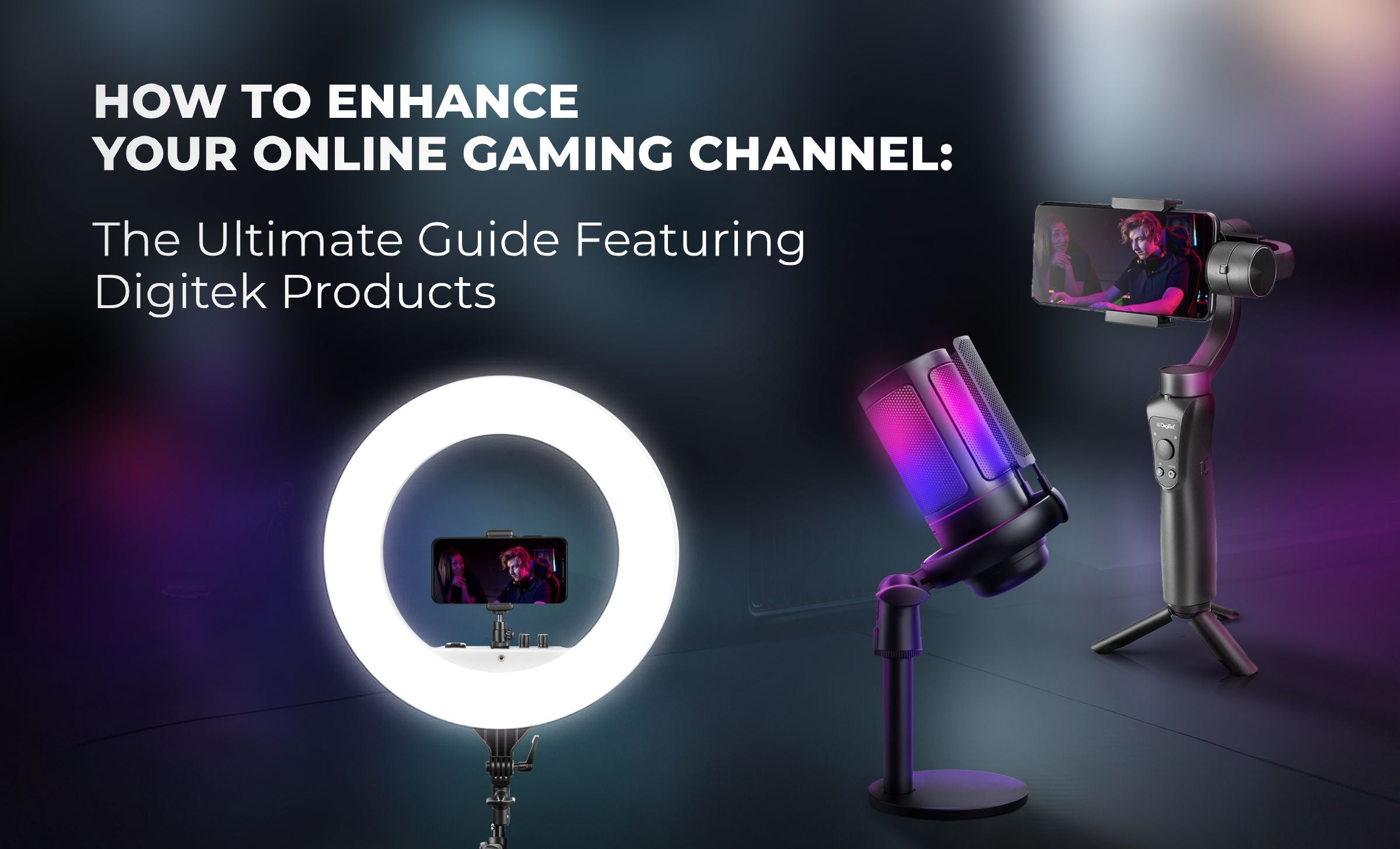Do you want to be a food YouTuber or do you love to cook? Have you had lighting problems in your videos, making your dishes look bland? You are not alone! Many innovators rely on natural light due to limited resources. But practicing artificial lighting is essential to improve your skills and take control of your videos. In this article, we will explain the types of lights and the tools needed to install artificial lighting.
Natural vs. artificial lighting: Which should you use?
IIf you are new to photography or videography, the first thing you might consider is whether to use natural light or manually. Let’s explore both options.
|
Natural lighting |
Artificial lighting |
|
✅ Is completely free and available. |
✅ Offers complete control over intensity and color temperature. |
|
✅ It makes food look natural and creates golden hues. |
✅ LED panels and ring lights can mimic natural light – so you can shoot any time of day. |
|
❌ Isn’t always reliable. Weather can change at any time, making taking photos harder. |
❌ Initial investment is needed for lighting. |
|
❌ Constant camera adjustments are needed. |
Why not natural light?
Many people ask, "Why not just use natural light?" The answer is yes, you can, and many do. Natural light is the cheapest form of lighting and can produce great results. However, it has many disadvantages that may outweigh the advantages. You can’t control it like you would with artificial lights; You can’t turn the sun on and off or adjust its brightness easily. When shooting indoors, you need windows that are the right size and positioned to let in enough sunlight. In short, there are too many uncertainties to rely on natural light, and artificial light helps. With artificial lights, you can illuminate exactly what you want, keeping distracting backgrounds dark. You can adjust the lighting to your liking, ensuring that your subject stands out clearly without harsh shadows or harsh lines. Plus, you can store everything you need.
Professional 3-point setup
COLBOR has introduced a range of LED studio lights designed for use in video. These lights have a variety of capabilities, allowing you to set up 3-point lighting to optimally illuminate your subject and subject. In this section, we’ll explain how the 3-point system works, when to use it, and which COLBOR studio lights are ideal for this system.
How it works
The 3-point lighting system is widely used to create YouTube videos in studios. It has three types of lights:
- Key Light: This is the most intense light, focused on the sight directly above the eye.
- Fill the light: This light helps reduce the shadows created by the main light.
- Backlight: This light illuminates the background and helps the subject distinguish himself.
When to use
If you are in a large video studio and on a budget to upgrade your YouTube video lighting, this may be the best lighting system. Using three-point lighting allows you to create dramatic shadows in your videos. These shadows can be hard or soft, but they will always add volume and depth to your photos and movies. Here’s what you need to make a cooking video for YouTube!
If you’ve decided to experiment with artificial lighting, the next step is to choose the right equipment.
Softbox
Softbox is essential for cooking videos because it converts harsh light into soft, natural light that makes food look beautiful. The size and shape of the soft box is important; the larger ones cast softer shadows and bring out the details, making the food more appealing. Different shapes, such as rectangles or rectangles, also affect the quality and direction of the light. It’s important to place it correctly: placing it at 45 degrees food-friendly improves texture and color while reducing harsh shadows. Consider a model, such as the Digitek (DSB-65 Bowens) Octagon Soft Box, which provides high surface light and even distribution.
LED panels
LED panels play an important role in cooking videos. They offer adjustable color temperatures, typically from a warm 3200K to a cool 5600K, to help simulate natural light or set a specific mood. You can adjust their brightness and color to make the food look brighter and more even. When combined with a diffuser or reflectors, LED panels can reduce harsh shadows, adding depth to the space without thin lighting. By placing them in different areas in relation to other light sources, you can create an interesting and interesting environment. These versatilities make LED panels essential for professional and attractive food photography.
Ring lights
Ring lights are perfect for cooking videos because they provide soft, flattering lighting that minimizes shadows on the face of the recipient, resulting in a clear and elegant look Their circular shapes are interrupted around the subject, and provides steady lighting in both direct camera shots and scenes on food It works perfectly for, showcasing its texture and color without harsh shadows If you place ring lights on the food directly or in front of the server, it adds detail and brightness, making foods seem incredibly delicious. Compact and lightweight, ring lights such as the Digitek (DRL-14 RGB) 31cm LED Ring Light are ideal for artists looking to enhance their feed with professionally experimental images
Reflectors
Reflectors are great for controlling light and shadows, making food more appealing. They reflect light on the food, helping to soften shadows, enhance colors and highlight textures, and make food look brighter and tastier especially helpful in situations where the food one half too bright or too dark inside, creating a beautifully balanced and elegant look. You can buy a reflector, like the 47-inch Digitek (DRB 5-1) Camera Reflector.
Diffusers
Maybe you’re filming near a window that emits unexpectedly intense light or you have a bright light source that seems too intense. If so, a light diffuser like Digitek (DFB 004) is all you need. By placing it between the harsh lighting and your cooking system, the diffuser gently spreads the light, allowing your food to hit it from multiple angles this softens shadows and reduces contrast. While a flexible box is effective for diffused light, a stand-alone diffuser provides additional control for different lighting situations.
Important lighting tips for making interesting cooking videos
Using diffused lighting to heighten natural textures
Soft lighting can enhance natural food. It diffuses light evenly, reducing harsh shadows while still providing adequate illumination. This gives the dish an elegance that emphasizes texture and detail, making it more appealing.
Utilizing accent lighting for highlighting
Accent lighting illuminates parts of the dish, making it stand out and offering a stunning view. Whether it’s the brightness of a delicious sauce or the crispy top of a perfectly baked pie, accent lighting ensures that your viewers see everything. You can use these lighting techniques to enhance your video and make your cabinets more attractive without spending a fortune on fancy equipment. In the end, it’s not about the tools you have, but how you use them.
Managing reflections with polarizing filters
Polarization filters, such as the Digitek (MC UV MM) MC UV Filter, attach directly to your camera lens and act like sunglasses. They help reduce your videos. These filters are most useful when baking shiny objects such as pots, pans, broths and sauces.
Understanding color temperature and white balance
Color temperature affects how food looks on camera. If you are using natural light, you may need to change colors at different times of the day. For artificial lighting, choose cool colored bulbs, daylight, around 5000-5300 Kelvin. These bulbs mimic natural daylight and make your food more attractive.
Turn off ambient lights
Ambient lights, such as ceiling lights or lamps, can create an orange tint that affects the color balance of your video. If you depend on natural light or well-adjusted artificial lights, ensure that all similar lights are switched off.
Final Words
Being good with lighting can make your YouTube cooking videos much better. Whether you opt for natural light or invest in artificial lighting, understanding how to control and manipulate light will help you create visually stunning effects that give your cabinets a it cannot be prevented. With the right tools, such as softboxes, LED panels, ring lights, reflectors and diffusers, you can create professional-quality videos that capture your audience and set you apart in the competitive world of content creation. Remember, it’s not just about the tools you use, but how creatively you use them to tell the story of your cooking.
INFOGRAPHICS
Natural vs. Artificial Lighting for your cooking tutorial
- Natural Lighting:
- ✅ Free and available.
- ✅ Makes food look natural with golden hues.
- ❌ Unreliable due to weather changes.
- ❌ Requires constant camera adjustments.
- Artificial Lighting:
- ✅ Complete control over intensity and color temperature.
- ✅ Mimics natural light, enabling shooting at any time.
- ❌ Initial investment required.





Leave a comment
This site is protected by hCaptcha and the hCaptcha Privacy Policy and Terms of Service apply.